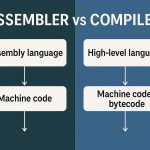Introduction
Constructor Chaining is an object-oriented programming technique where one constructor calls another constructor in the same class or its parent class. This helps avoid code duplication, centralize initialization logic, and improve maintainability.
It’s widely used in languages like Java, C++, C#, and even Python (indirectly via super()). Constructor chaining enhances the clarity and structure of class initialization, especially when dealing with multiple constructor overloads or inheritance.
Why Constructor Chaining?
| Benefit | Description |
|---|---|
| Reduces code duplication | Common initialization logic is reused across multiple constructors |
| Simplifies maintenance | Changes only need to be made in one place |
| Improves readability | Clear hierarchy of initialization steps |
| Supports DRY principle | Keeps codebase concise and consistent |
| Helps in inheritance | Allows derived class to ensure base initialization |
Types of Constructor Chaining
- Within the same class (Intra-class chaining)
- Across classes via inheritance (Superclass chaining)
Constructor Chaining in Java
1. Calling another constructor in the same class
Use this() to call a constructor from another constructor in the same class.
public class Person {
private String name;
private int age;
public Person() {
this("Unknown", 0); // Constructor chaining
}
public Person(String name) {
this(name, 0); // Calls two-parameter constructor
}
public Person(String name, int age) {
this.name = name;
this.age = age;
}
}Rules:
this()must be the first statement in the constructor.- You cannot call more than one constructor in a single chain.
2. Calling superclass constructor
Use super() to call a constructor from the superclass.
public class Employee extends Person {
private double salary;
public Employee(String name, int age, double salary) {
super(name, age); // Calls Person constructor
this.salary = salary;
}
}Constructor Chaining in C++
C++ uses constructor delegation (since C++11) and initializer lists for constructor chaining.
Intra-class chaining with delegation:
class Person {
public:
std::string name;
int age;
Person() : Person("Unknown", 0) {} // Delegating constructor
Person(std::string name) : Person(name, 0) {}
Person(std::string name, int age) : name(name), age(age) {}
};Superclass chaining via base initializer list:
class Person {
public:
Person(std::string name, int age) { /* init */ }
};
class Employee : public Person {
public:
Employee(std::string name, int age, double salary)
: Person(name, age) // Superclass chaining
{
// own initialization
}
};Constructor Chaining in Python
Python uses __init__ for object initialization. While Python doesn’t have formal constructor overloading, you can simulate chaining using default values or class methods.
Using super() for superclass chaining:
class Person:
def __init__(self, name, age):
self.name = name
self.age = age
class Employee(Person):
def __init__(self, name, age, salary):
super().__init__(name, age) # Superclass constructor call
self.salary = salaryIntra-class chaining with @classmethod:
class Person:
def __init__(self, name, age):
self.name = name
self.age = age
@classmethod
def unnamed(cls):
return cls("Unknown", 0)
p = Person.unnamed()Constructor Chaining in C#
C# supports both intra-class and base-class chaining with this and base keywords.
Intra-class:
public class Person {
public string Name;
public int Age;
public Person() : this("Unknown", 0) {}
public Person(string name) : this(name, 0) {}
public Person(string name, int age) {
Name = name;
Age = age;
}
}Superclass chaining:
public class Employee : Person {
public double Salary;
public Employee(string name, int age, double salary) : base(name, age) {
Salary = salary;
}
}Rules and Best Practices
| Rule / Tip | Why It Matters |
|---|---|
| Use constructor chaining to reduce redundancy | Avoid copy-pasting similar logic |
Always call this() or super() first | Required by language rules (Java, C#) |
| Don’t overchain | Too many chained constructors can make code harder to trace |
| Use factory methods if logic is too complex | Separate logic into dedicated factory methods |
| Keep constructors simple | Avoid placing business logic in constructors |
Real-World Example: Shape Class
public class Shape {
protected String color;
public Shape() {
this("black");
}
public Shape(String color) {
this.color = color;
}
}
public class Circle extends Shape {
private double radius;
public Circle() {
this("black", 1.0);
}
public Circle(String color, double radius) {
super(color); // superclass constructor
this.radius = radius;
}
}Here’s the full chain:
new Circle()callsCircle(String, double)- Which calls
super(color) - Which calls
Shape(String) - Which assigns
this.color
Constructor Chaining vs Method Overloading
While both relate to multiple ways of calling functions, constructor chaining is specifically for managing object creation, while method overloading can apply to any callable method with different signatures.
Constructor chaining often uses overloading as its base:
public MyClass() { ... }
public MyClass(int x) { ... }
public MyClass(int x, String y) { ... }These are overloaded constructors that may use chaining internally.
Pitfalls and Mistakes
| Mistake | Consequence |
|---|---|
| Forgetting to call base constructor | Leads to uninitialized parent state (C++, Java) |
Using this() after other statements | Compiler error in Java or C# |
| Creating recursive constructor loop | Infinite recursion, stack overflow |
| Excessive constructor logic | Hard to debug and unit test |
Best Practices
- ✅ Use
this()to centralize constructor logic - ✅ Always call
super()in subclass constructors - ✅ Minimize logic inside constructors
- ✅ Prefer composition over complicated chaining when possible
- ❌ Avoid deep constructor chains that are hard to debug
Summary
| Concept | Description |
|---|---|
| Constructor Chaining | Calling one constructor from another |
| Intra-class Chaining | Use this() to call sibling constructor |
| Superclass Chaining | Use super() (or base) to call parent constructor |
| Purpose | Eliminate redundancy, centralize initialization |
| Common in | Java, C++, C#, Python, Kotlin |
Constructor chaining brings clarity and reusability to class initialization when used properly.
Related Keywords
- Base Class
- Class Inheritance
- Constructor Overloading
- Default Constructor
- Factory Method
- Inheritance Chain
- Instantiation
- Object-Oriented Programming
- Super Keyword
- This Keyword









